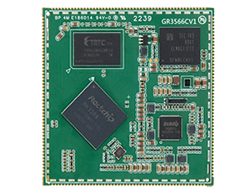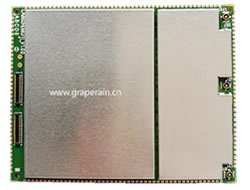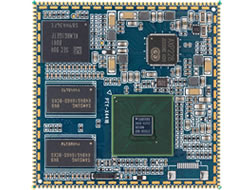
A system on module(SOM) is a Board level circuit that integrates a system function in a single module. Shenzhen Graperain Technology Co., Ltd. have spend many years in Samsung and Qualcomm chipset system on module, such as Samsung S5PV210, Samsung Exynos4412, Samsung S5P4418, S5P6818, and Qualcom MSM8916. The engineers design the schematic diagram and product of these system on modules.
These system on module could be used in products directly, just design a carrier board and pin out its functions. The company could provide this design service for the carrier board efficiently from the engineers who designed the SOM. Now these Samsung SOM and Qualcomm SOM have been proved well in market for last two years. And the clients have used them in POS, PDA, PND, smart home, phone, learning machine, game machine and other kinds of industrial control filed.
A System on Module (SoM) offers a unique approach to product development and the often fully custom electronics typically contained within sophisticated devices. A SoM helps system designers realize a fully customized electronics assembly, complete with custom interfaces and form factor without the effort of a ground-up electronics design. Customers can purchase an off-the-shelf SoM and marry it to an easy to develop custom base board to create a solution functionally identical to one that is fully custom-engineered. This method reduces product development costs while shortening time to market and technical risk. Graperain Technology provides a range of SoM offerings in its Graperain family. The Graperain is a series of highly-configurable, small form factor embedded CPU engines. These combine DSP and/or FPGA and/or ARM processors that are optimized for custom data collection and processing, and meet the needs of a broad range of scientific and industrial applications.
Following is the company SOM list in selling:
--G4418 System on Module ( G4418 SOM ) on Samsung S5P4418
( ARM Cortex- A9@ 1.4GHz Quad Core )
--G6818 System on Module ( G6818 SOM ) on Samsung S5P6818
( ARM Cortex- A53@ 1.6GHz Octa Core )
--G8916 System on Module ( G8916 SOM ) on Qualcomm MSM8916 (410)
( ARM Cortex- A9@ 1.2GHz Quad Core )
--G3288 System on Module ( G3288 SOM ) on Rockchip3288 ( RK3288 )
( ARM Cortex- A9@ 1.2GHz Quad Core )
More on SoM
The System on Module, which is sometimes referred to as a Computer on Module (CoM), is designed to plug into a carrier, or base board, and is generally a small processor module with a CPU and standard I/O capability. The complex effort associated with designing a CPU subsystem is avoided by using SoM functionality and a custom base board.
There are a number of benefits to the SoM approach vs. ground-up development. These include cost savings, reduced risk, a variety of CPU choices, decreased customer design requirements, a small footprint, and, since software developers can use off the shelf hardware with the same processing core as the finished product, the ability to perform hardware and software development in parallel.
System-on-Module ( SOM ) Introduction
System-on-Module is the MINI PC's core functions packaged in an electronic board packaging. Most of the system-on-module integrates the CPU, memory devices and pins, through the pin and supporting the bottom plate connected together to achieve a field of system chips. People often such a system called the microcontroller, or an embedded development platform. Because the system-on-module integrates the core of the common functions, so it has a c system-on-module can customize the versatility of the different floor, which greatly improves the development efficiency of the microcontroller. Because the system-on-module as a separate module separated, it also reduces the development of the difficulty, an increase of system stability and maintainability.
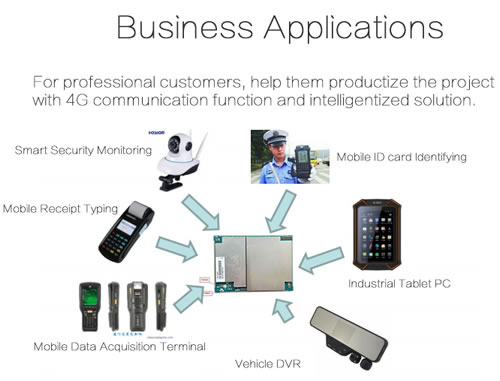
System-on-Module ( SOM ) Component
1.CPU
CPU is the core of the most important part of the board, which includes operator and controller. If the computer compared to be a person, the CPU is his heart. No matter what kind of CPU, its internal structure can be divided into control unit, logical unit and storage, these three parts are coordinated, can analyze, judge, calculate and control the coordination of various parts of the computer work.
2. Memory
Memory is used to store programs and data components, for the computer, with memory and its function to ensure the normal work. Many different types of memory, according to their purposes can be divided into main memory and secondary memory, the main memory, also known as the internal memory (referred to as memory), secondary memory, also known as external memory (referred to as external memory). External memory is usually magnetic media or CD-ROM, such as hard disk, floppy disk, tape, CD, etc., can save information for a long time, and do not rely on electricity to save information, but driven by mechanical components, the speed and the CPU is much slower. Memory refers to the memory components on the motherboard, the CPU directly communicate with them, and use it to store data components, storage is currently in use (be the implementation) of data and procedures, its physical essence is one or more groups have d ata input and output and data storage function of the integrated circuit, the memory is only used to temporarily store programs and data, once the power off or power outages, the program and data will be lost.
System-on-Module ( SOM ) Platform Type
System-on-module according to the type of platform to the main points by CPU chip type, now popular mainstream platform ARM, Samsung, and INTEL.
1.ARM Platform
ARM processor is of three features: less power consumption, 16-bit / 32-bit dual instruction set and a large number of partners. (16-bit) / ARM (32-bit) dual instruction set, which can be very compatible with 8/16-bit devices; extensive use of registers, the instruction execution speed faster ; Most data operations are completed in the register; addressing flexible and simple way, the implementation of high efficiency; instruction length is fixed.
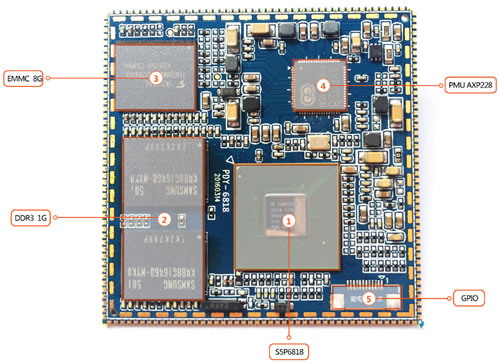
2.Samsung Platform
Samsung platform on behalf of the chip is S5PV210, also known as "hummingbird" is Samsung S5PV210 Samsung introduced a piece of smart phones and tablet PCs used in multimedia applications such as processor, S5PV210 uses ARM CortexTM-A8 core, ARM V7 instruction set, Clocked up to 1GHZ, 64/32-bit internal bus structure, 32 / 32KB of data / instruction level cache, 512KB of L2 cache, can achieve 2000DMIPS (200,000,000 instruction set per second) high-performance computing power.
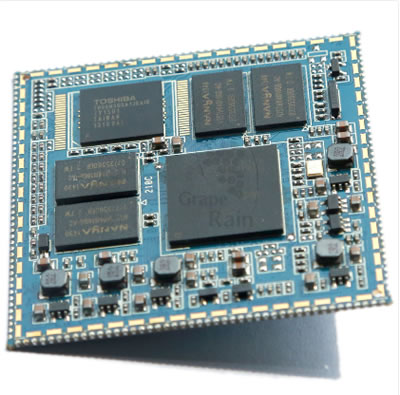
3.INTEL Platform
INTEL platform refers to the X86 architecture platform, the x86 architecture is important to the variable instruction length CISC (Complex Instruction Set Computer, Complex Instruction Set Computer). The memory accesses of the word (word, 4 bytes) length allow the memory addresses to be misaligned, and the blocks are stored in memory in the order of the lower order byte. Backward compatibility has always been a driver behind the development of x86 architectures (design needs dictate this factor and often lead to criticism, especially from opponents of processor advocates and theorists, who for a widely considered behind the design of the continued success of the structure was puzzled). However, in the newer micro-architecture, the x86 processor converts the x86 instructions into more RISC-like microinstructions for execution, resulting in superscalar performance comparable to that of RISC while still maintaining backward compatibility
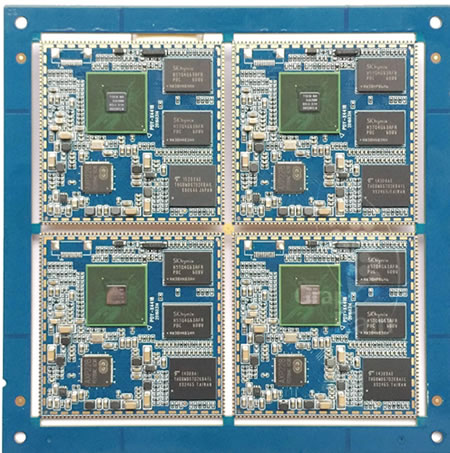
System-on-Module ( SOM ) Development History
1.The Initial Stage
Broadly speaking, the initial start-up phase should be the emergence of the third generation of integrated circuits in 1959, which marked the birth of the most primitive system-on-module. Strictly speaking, the birth of the first microprocessor in Silicon Valley in 1971, which marking the birth of the system-on-module to create a new era of microcomputers.



